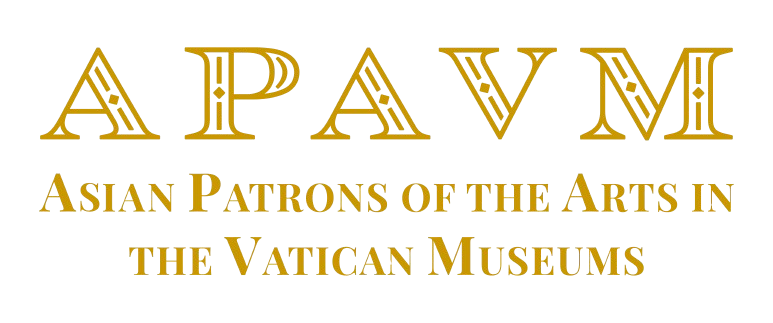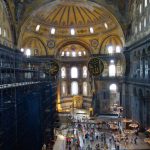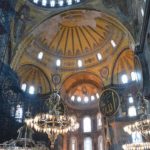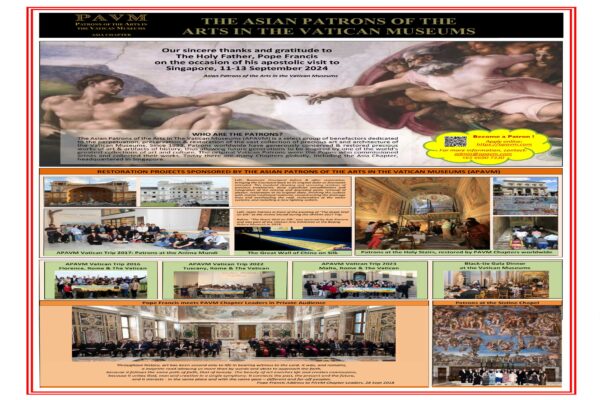Guest article by Rachel Choo
20 December 2020
Much has been said concerning Hagia Sophia’s recent reconversion to a mosque. The perceived setback for Christianity notwithstanding, Hagia Sophia’s nature as a site for religious dialogue and cultural exchange is not just dependent on its being a secularist museum showcasing the juxtaposition of monotheistic faiths. Rather, it is intrinsic to the originally Orthodox cathedral’s location, construction, architectural fabric and intended function, which symbolize interface in several ways.
The Hagia Sophia of today is basically a 6th-century edifice. Two earlier Hagia Sophia churches were burnt down in riots, the second round of these being the Nika riots during the reign of emperor Justinian I. We use the terms Byzantine or Byzantium to refer to the imperial polity which reached its height under him. Its own people however called it the Roman Empire. Constantine I, who legalized Christianity in AD 313, had shifted the empire’s capital from Rome to the location of an old Greek fortress on the Bosphorus, the strait which divides Europe from Asia. The fortress was Byzantion, which he renamed Constantinople. Justinian would be the last emperor to speak Latin, the language of ancient Rome. Thereafter the empire continued to call itself the Roman Empire even as Greek became its main language. Justinian himself was Illyrian, or in today’s terms, Croatian.
In those basic geographical and historical underpinnings lie the ingredients of various interfaces.
First, there is the empire’s transition from paganism to Christianity. Justinian’s construction of the magnificent Hagia Sophia which exists today was arguably the high-water mark in imperially sponsored church-building which resulted from Christianity becoming the official Roman religion sometime after its legalization.
Second, is the Roman re-encountering of its cultural predecessor in ancient Greece, through relocation to Byzantion and the increasing adoption of the Greek language. Till today the Ecumenical Patriarchate of Constantinople, which has honorary primacy amongst Eastern Orthodox churches and once had Hagia Sophia as its cathedral, is Greek-speaking.
Third, is the contribution to the Roman Empire by its peoples from beyond the Italian lands, as personified by Justinian.
The fourth relates to the Nika riots that originated partly in a tax revolt, and partly as a punch-up between opposing audience factions in Constantinople’s circus. The unrest escalated after Justinian refused the demands of the factions, which had in the meantime united, for a pardon of escaped offenders in the revolt. Perhaps 40,000 were killed in the suppression of the unrest which destroyed part of the city. To discourage further trouble, Justinian set large numbers to work on rebuilding projects, including Hagia Sophia’s, which was supposedly intended to surpass Solomon’s temple in grandeur and monumentalize Justinian’s own greatness. Out of this political and urban upheaval came the unlikely synthesis of ruler and subjects in creating the marvel of Hagia Sophia.
The building itself and its intended functions embody the meeting of opposites and different modes. Whereas its predecessors had modelled themselves upon the Roman town hall or basilica, the new Hagia Sophia combined the basilica form –– rectangular, apsidal, internally colonnaded and clerestoried –– with the central plan of building around a circular dome resembling those of certain Graeco-Roman temples. The basilica would until modern times be the main basis for Western Christian churches; the central plan however has predominated in Eastern Christianity.






